How to plan the perfect ski trip
Whether you’re a pro planner or a skiing and snowboarding newbie, you’ll want to check out our ultimate guide to organizing the perfect ski trip.

Pop the bubbly or crack a beer – a ski trip is in sight! Yep, it’s officially made its way past the group chat and is now a real thing you have to organize. But this isn’t a turn-up-with-a-suitcase-and-see-what-happens vacation like a beach trip might be. Nope – a ski trip requires a bit more planning.
But why spend hours researching and disappearing down a rabbit hole of a million tabs when we’re here? Yep, we think it’s fair to say that the Dope team has been on a fair share of ski trips in our time. So, let us guide you in what to plan, what to organize – and what you can wing when you get there.
Dope Mag has it all – and more – in our ultimate guide to planning the perfect ski trip, whether you’re going solo or gathering a group. Okay, we get that nothing’s 100% perfect in life, but we’re pretty confident that your trip will be near flawless if you follow these eight steps. We cover everything from working out your budget to packing your new favorite ski jacket and ski pants.
Quick find navigation
1. Work out your budget
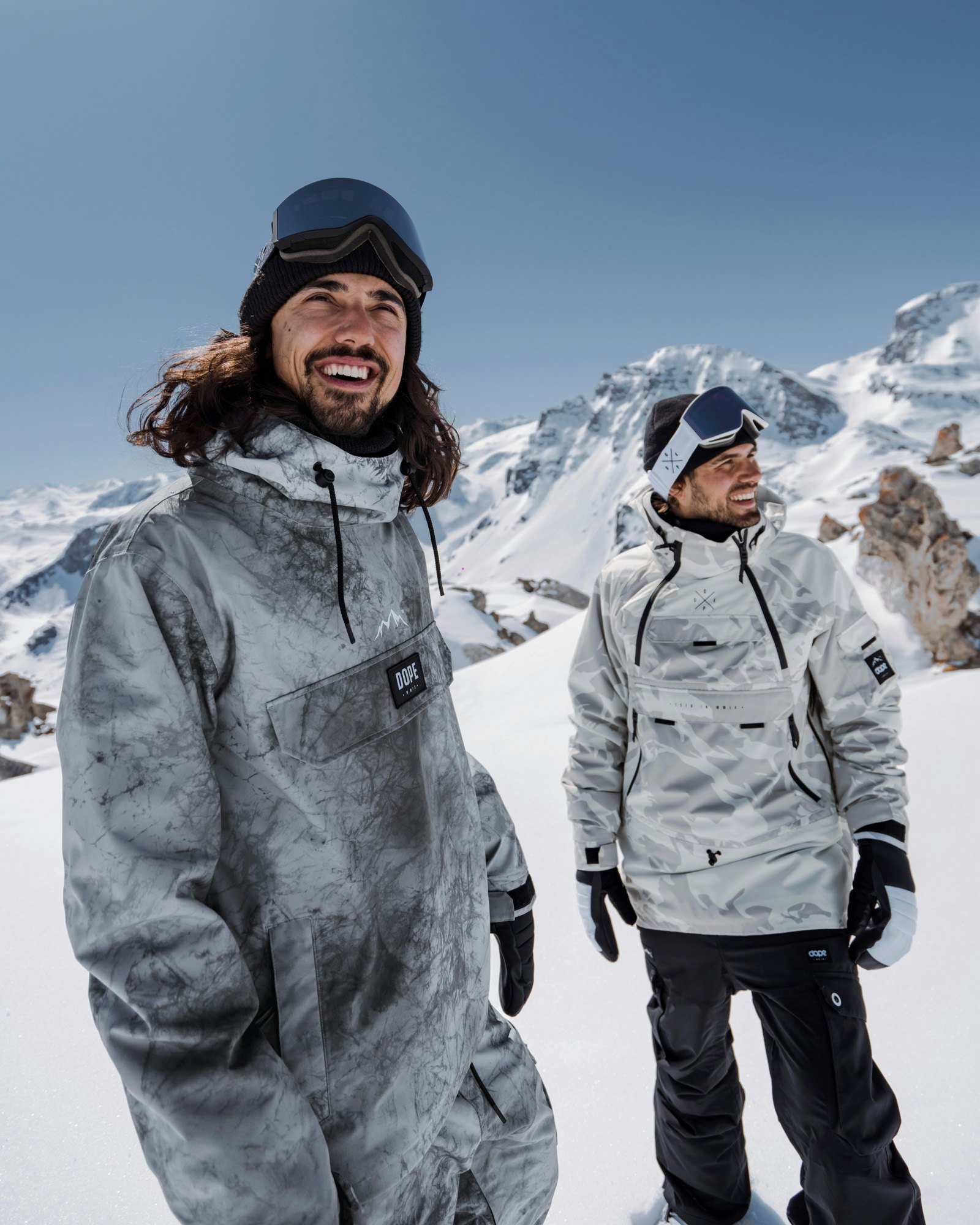
This is the best starting point for working out where and when your ski trip takes place. For example, a five-star chalet somewhere like Verbier at Christmas will have a totally different vibe (and number of zeros in price) to a hotel in Bulgaria during late season.
Saying that, though, you can find some insane deals at the more typically pricier (and popular) resorts. Most ski resorts offer all-inclusive packages that are ultimately cheaper than buying your flights, accommodation, and lift tickets separately.
Tour operators and package holidays might initially have you seeing more dollar bill signs. However, their overall price often includes flights, transport to and from the airport, lift tickets, meals for the week, and even special promotions (such as kids go free). So, shop around to see if it’s more beneficial to go down the ski trip package route rather than booking everything independently.
If you’re going independent or opting for a package deal, as a general rule, it’s always better to book everything as far in advance as possible. We’re talking about lift tickets, flights, rental cars, lodging, and lessons. Don’t get us wrong – planning a last-minute ski trip is totally doable, however, prepping and booking ahead of the game is often an effective way to save those pennies. Plus, it just means everything’s sorted, so you can revel in zero stress. You know what they say about the early bird and all that…They often catch fresh tracks, too.
2. Choose your ski resort
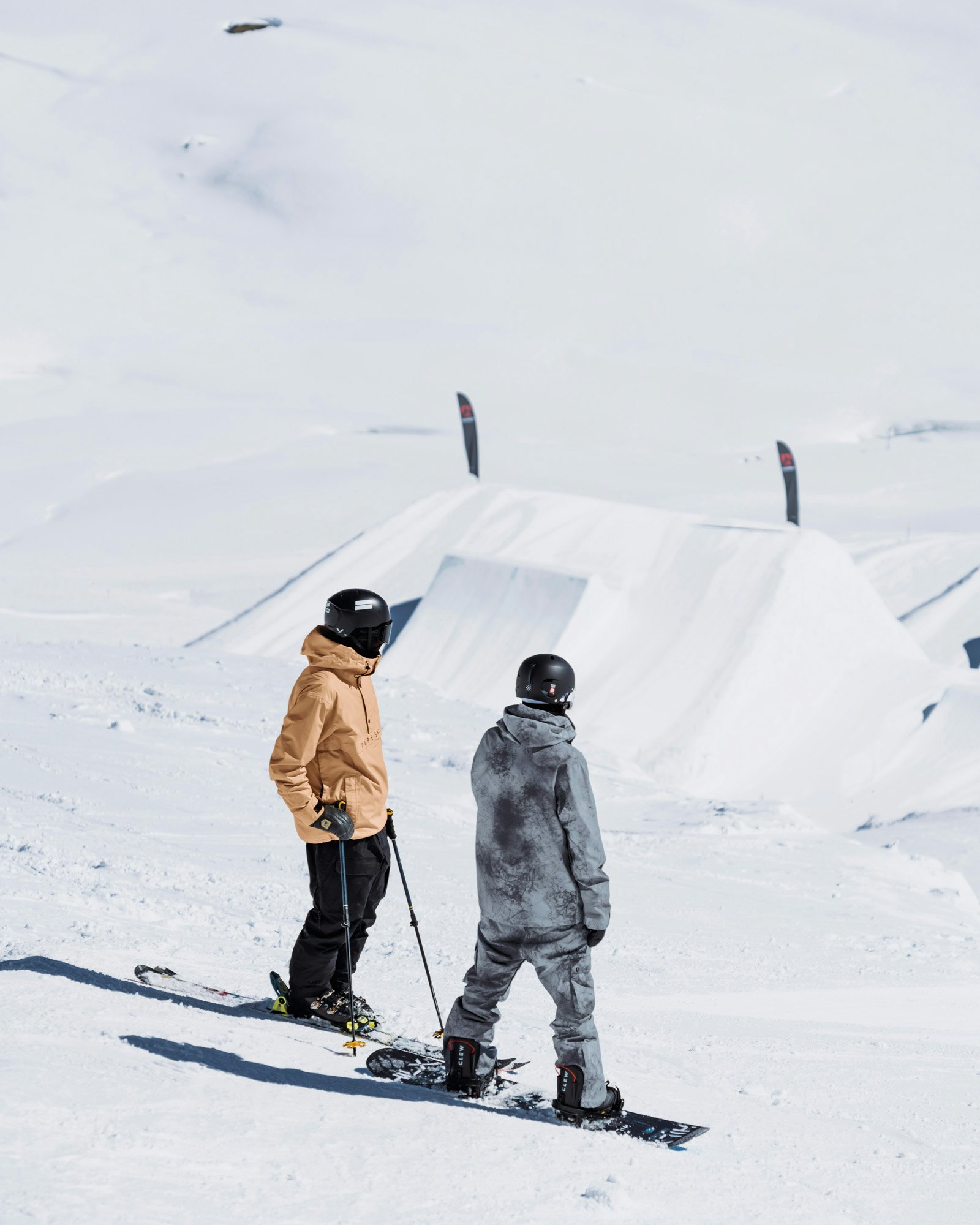
Okay, probably the most important – but stoke-raising – part of planning a trip is figuring out where you’re going! Is it going to be somewhere close to home? One of the best ski resorts in the US or a top resort in Canada? What about crossing the pond to the Alps? OR how about going big with somewhere like Japan to tick that dream-worthy Japow off your bucket list? Yep, the world’s pretty much your oyster here.
Of course, it all depends on your budget. However, once you know which continent you want to ride in, you can start thinking about which factors matter most on your trip. These factors might be the après-ski scene, the off-piste riding, sick snow parks, or ski-in, ski-out lodging. Once you know what you want your vibe to be, it’s a little easier to narrow down your choices!
It’s also worth considering who’s going to make up your crew. For example, are you heading out with the fam? A resort’s got to be family-friendly with epic ski schools and plenty of off-mountain activities. Going with a mix of pros and newbies? Check if the resort offers a solid dose of beginner and intermediate to expert areas. Whatever it is, there’s a resort out there to suit.
And don’t forget to look at the smaller independent resorts, too, rather than just the heavy hitters and famous names. These smaller resorts are often ideal for getting more bang for your buck if that’s your prerogative.
3. Research the best time
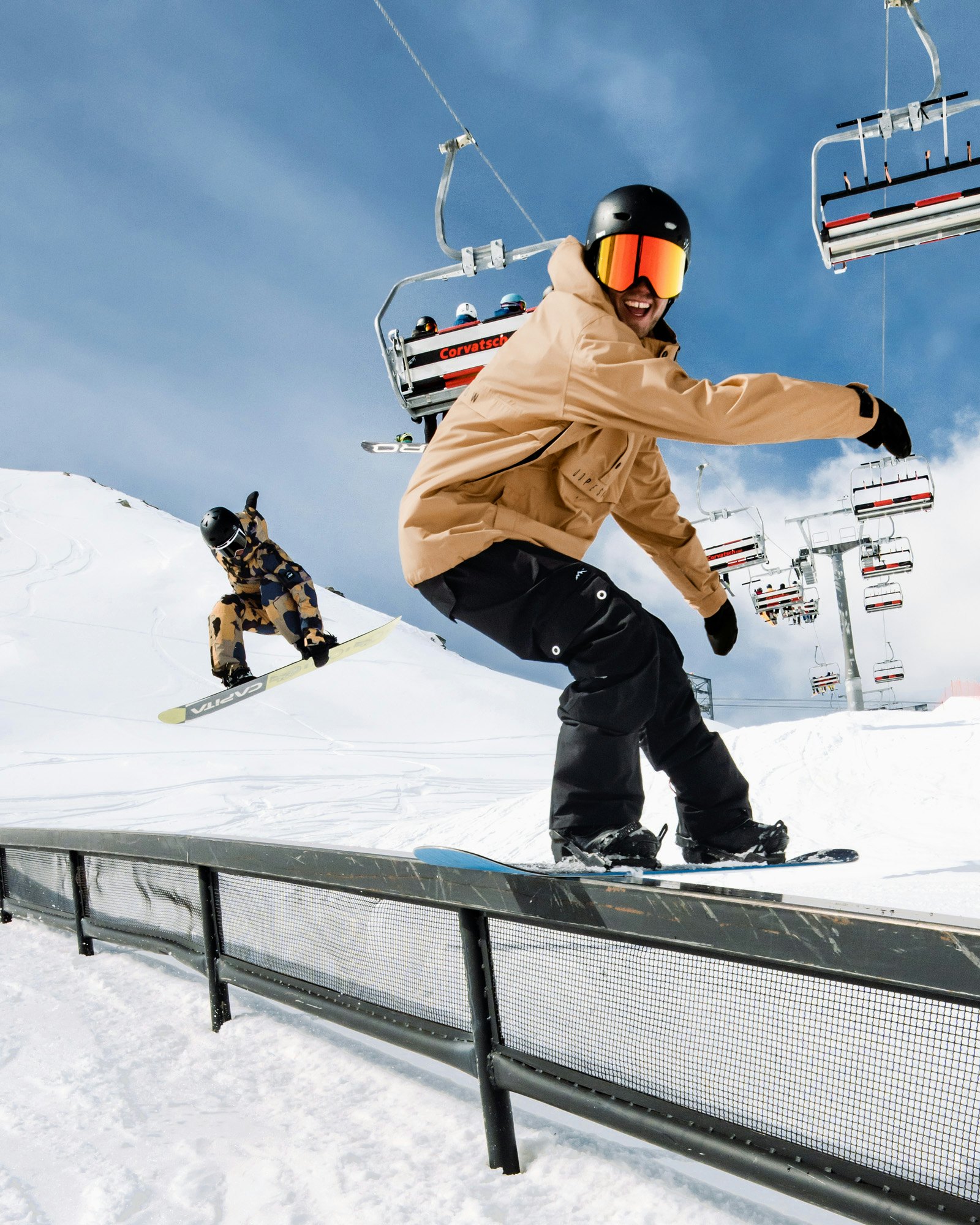
Most ski resorts open around late November and early December and close in early to mid-April. That gives you roughly five months to pick a week (or more!) and shred to your heart’s content. However, like most things, ski resorts have peak times.
These peak times are holidays and school breaks – and during these times prices soar. So, if you can, avoid heading out during the expensive periods. Weekends are also pricier when it comes to lift tickets and lodging. If you can be flexible, plan to ride on weekdays instead. The runs and lift lines are less crowded, too, so it’s a definite win-win!
Early-season riding also means fewer crowds, but there’s potentially less snow (not really our jam!). That’s why it’s handy to consider snowfall. As a super general rule, the best skiing and snowboarding conditions happen from December through to early March (hello powder days!).
Spring skiing in soft snow and blue skies is definitely worth experiencing, but don’t leave heading out to the resort too late in the season. Yes, prices are cheaper, but riding slush and dodging rocks can be a mega workout – and the powder hounds won’t get their fix. Après in the sun, though, is never a bad alternative!
4. Find your ski lodging
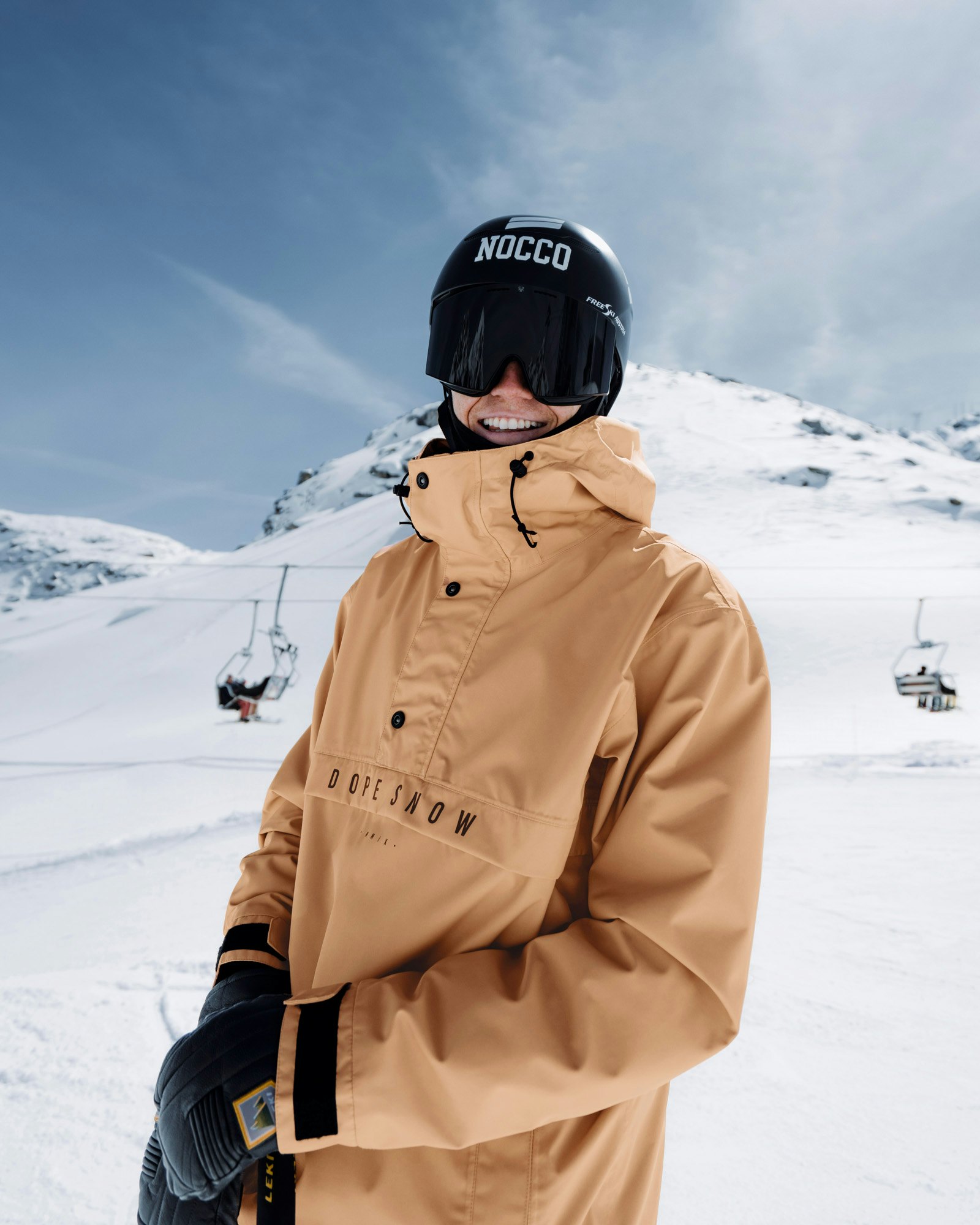
Once you know where you’re going and when, it’s time to find your ideal home base. Get onto this as soon as possible, as places can get booked up super quick, especially during peak times.
Like any other vacation, lodging costs depend on accommodation type and location, so keep these in mind when you’re hunting. For example, a standard hotel room that’s a 20-minute drive from the slopes will cost less than a ski-in, ski-out condo.
Of course, sometimes it’s better to go with more space if you’re heading with a large crew – especially if there’s a hot tub to unwind in after a long day! It’s also worth considering if you want to go self-catered or experience the catered-for-life, like a classic ski chalet with chalet hosts – and even a personal driver if you’re feeling super boujee!
Location-wise, staying close to the lifts typically costs more. However, some resorts don’t provide on-mountain accommodation. So, you’ll need to stay in nearby towns or cities and drive or catch a shuttle bus to the base of the slopes. That might sound like a bum deal, but some people sacrifice proximity to stay in towns and cities, anyway – the lodging’s often kinder on the purse strings, and there are sometimes more bars and restaurants available. But, again, it all depends on what you want to prioritize – do you want to be on the mountain to maximize your riding time and check out resort-related activities? Or would you rather be in a city with potentially cheaper lodging options?
5. Figure out your travel plans
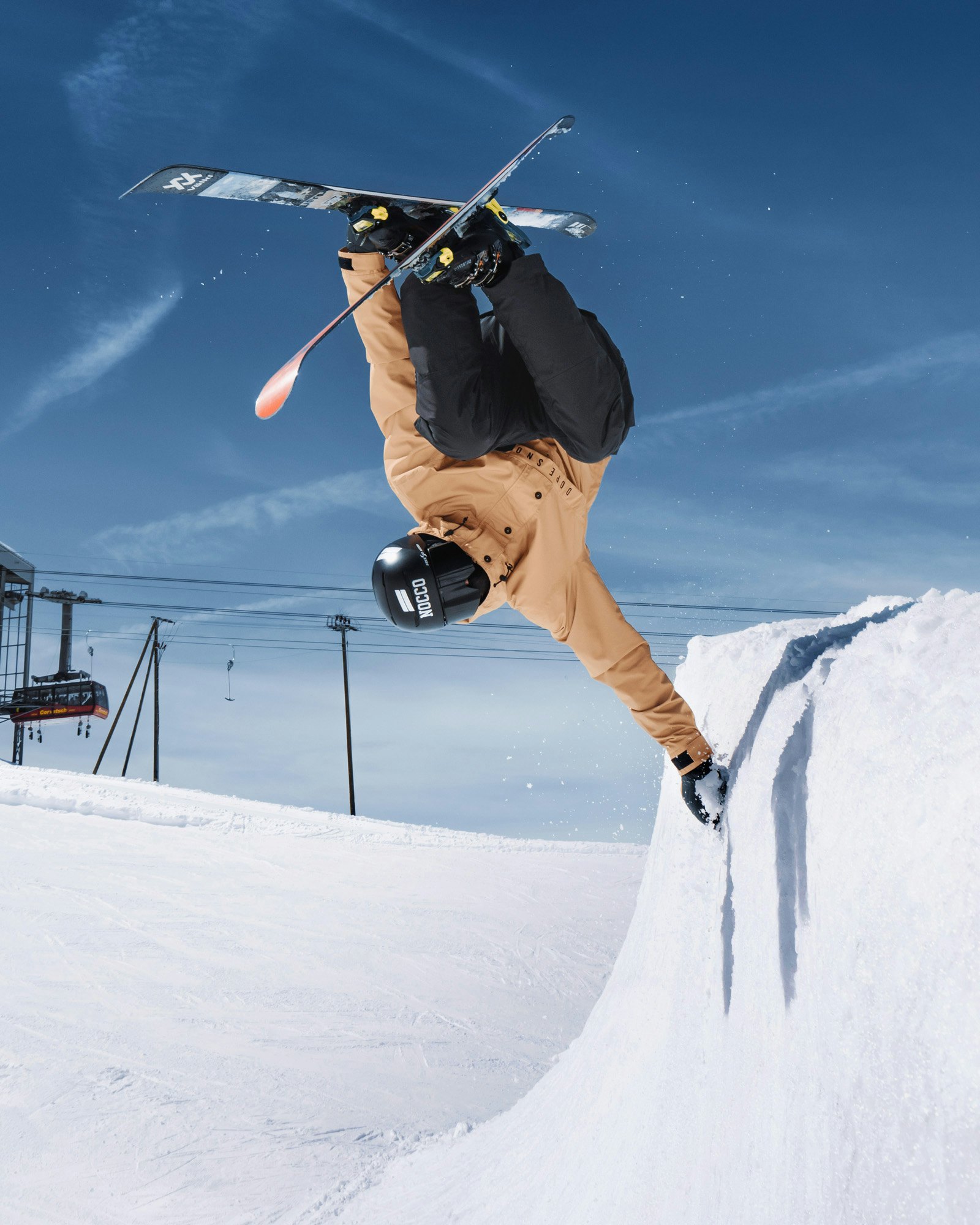
Phew, you’ve found your accommodation. Now comes the fun part of working out how you’ll get to the goods. Can you road-trip it? Will you have to fly? If you have to fly, can you hire a car from the airport to the resort or look into booking a resort transfer or shuttle bus? What about a train?
With so many options available, it often comes down to cost and ease. For example, driving is a smooth choice for transporting your gear and allows for flexibility. However, you’ll have to consider factors like traffic (particularly during popular weeks like holidays), paid parking, and driving in snow and icy conditions. Some resorts like Tignes in the French Alps, for example, require you to use snow chains when arriving and leaving the resort.
Flying is also easier if there are a few of you going. Our top tip? Set up fare alerts via Google Flights. They’ll let you know when your route fare drops – although anything last-minute won’t be cheap! Of course, there’s always the option to book with a travel operator, and everything’s sorted for you: from the flights to the transfer to and from the airport. This means you’re at their mercy, though, when it’s time to leave the resort. 5am wake-up call for a 3pm flight, anyone? Been there, done that. Got the T-shirt. Yikes.
Don’t forget how you’ll take your gear while flying, too, i.e., via ski and snowboard bags. Check the size restrictions with your airline, as some class ski and snowboard bags as oversized luggage, while others feature sports and ski kit allowance.
6. Book your lift tickets in advance
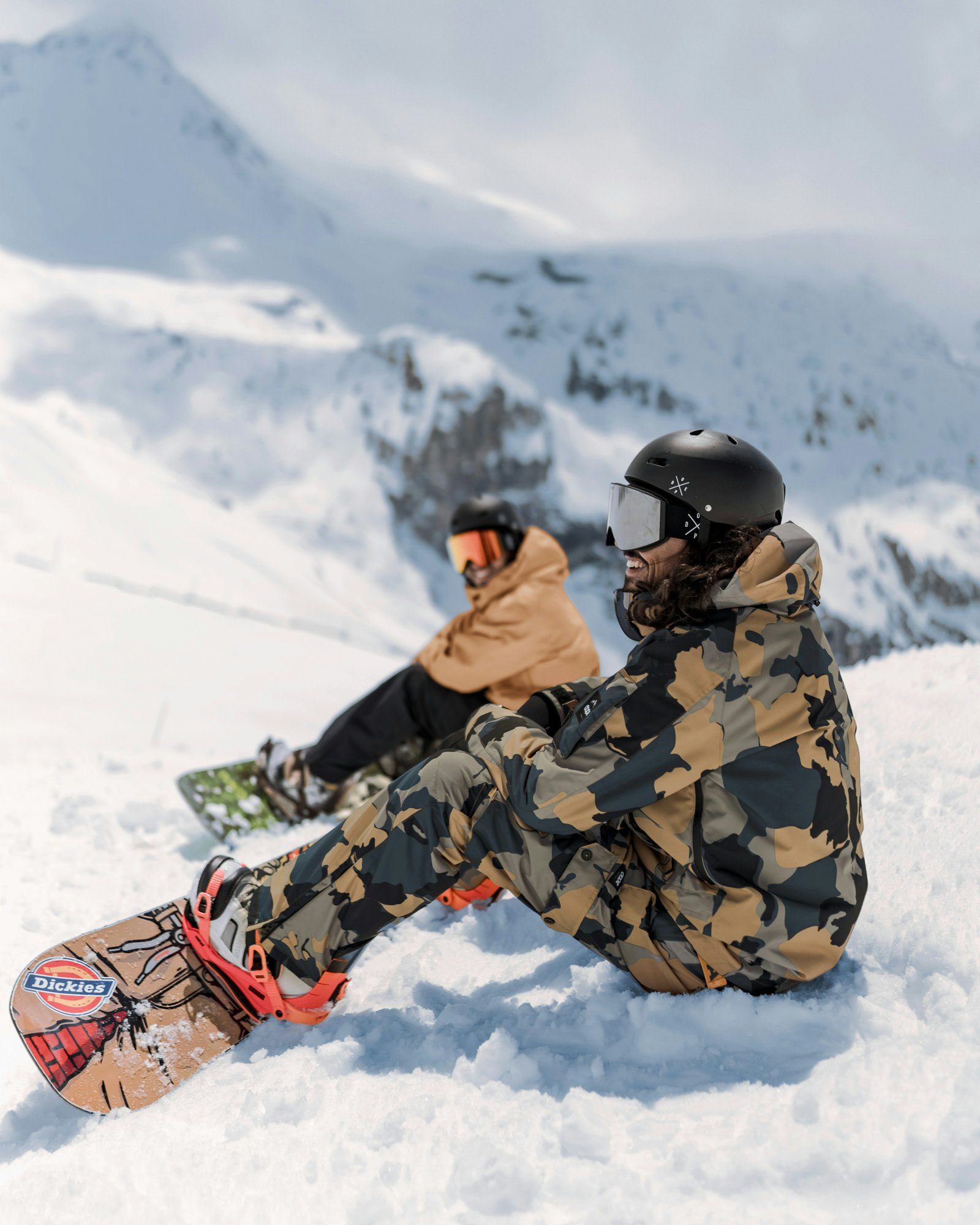
You can buy lift tickets in advance online, either individually or as bundles, for the specific dates you want to ride – and sometimes at a lower price. Most resorts offer discounted prices for family packages, too, while others allow kids to ride for free. Of course, you can totally leave it until the day-of and buy your lift ticket in the resort, but this is sometimes the most expensive option. And some resorts only sell a limited number of lift tickets each day. It’d suck to be at the back of the queue, wishing you’d booked online…
Heading to the mountains multiple times in a season? Consider purchasing a season pass. This often works out cheaper than buying separate lift tickets each week you’re there. You can also purchase passes like the IKON Pass that allow you to hit different resorts across the country and abroad during the same winter. If you’re really keen, buy your lift ticket in the Spring for the following season. Many resorts release next season’s lift tickets around April or May – and at early-bird, discounted prices. Now that’s some good planning!
Lessons are also key for booking in advance – don’t miss out on slotting the kids into ski school or securing your space in that off-piste lesson or once-in-a-lifetime heli-ski tour. Don’t forget to buy on-mountain insurance if needed, too. If you’re planning to ride off-piste, make sure you have separate insurance, as lift ticket insurance often only covers you if you’re riding on a marked run.
Oh, and that reminds us – don’t forget to book your general travelers’ insurance in advance. This covers you for flight delays, missing luggage, theft while in resort, and more. Hopefully, you’ll never need it, but it’s always better to be safe than sorry (and crying into your pint!).
7. Pack everything you need – and check the snow forecast
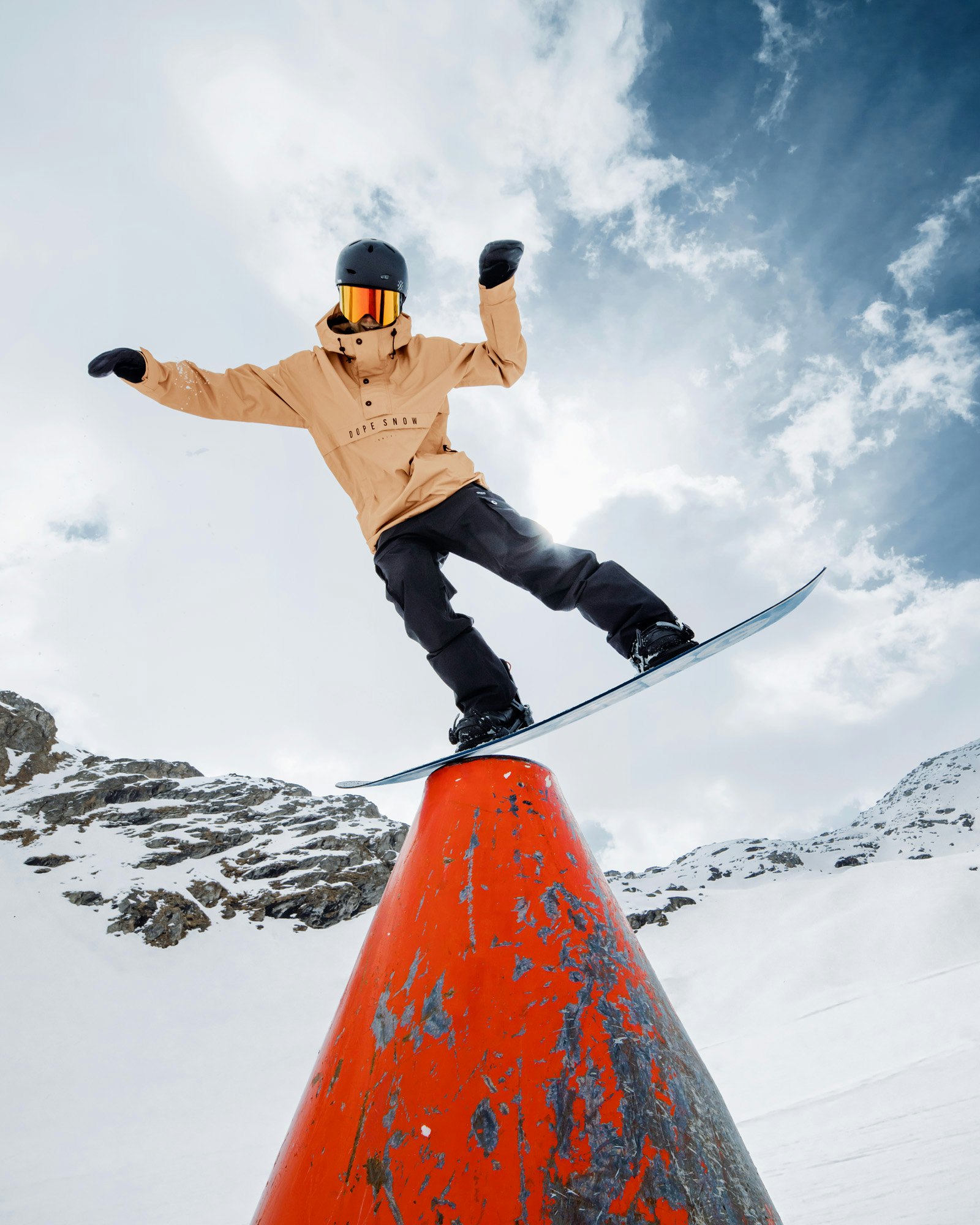
‘Packing light’ and ‘ski trip’ are two phrases that rarely go together. That’s because a ski trip requires a lot of stuff – your ski jacket, ski pants, base layers, gloves, beanies, helmet, goggles, equipment, and more. And there’s everything else to bring, too, such as essential tech and toiletries. Bringing your own gear? Make sure it’s tuned-up before you arrive.
It’s worth checking the snow forecast before you go. That’s because this can sway what you take. Whiteouts and plummeting temperatures forecast for the whole week you’re there? It’s worth packing some mid-layers, your insulated ski jacket and pants, and a goggle lens specifically for flat light. Due bluebird days and soft spring snow? Take a water-resistant hoodie with you to wear as an outer layer – and tons of sunscreen to avoid the dreaded goggle tan.
And don’t forget about extras for off-mountain activities, too. We’re talking about things like swimwear for the pools and spas and snow boots for evening restaurant trips. Of course, you can hire some gear like helmets while you’re in the resort to save some suitcase space.
This is particularly true for ski and snowboarding equipment. Hire while you’re out there (avoid the early morning crush by renting your gear the day before) and swap and change depending on conditions. For example, wake up to an unexpected powder day? Head to the rental shop and swap your piste skis for some fat ones for maximum float. Dreamy.
8. Leave some wiggle room
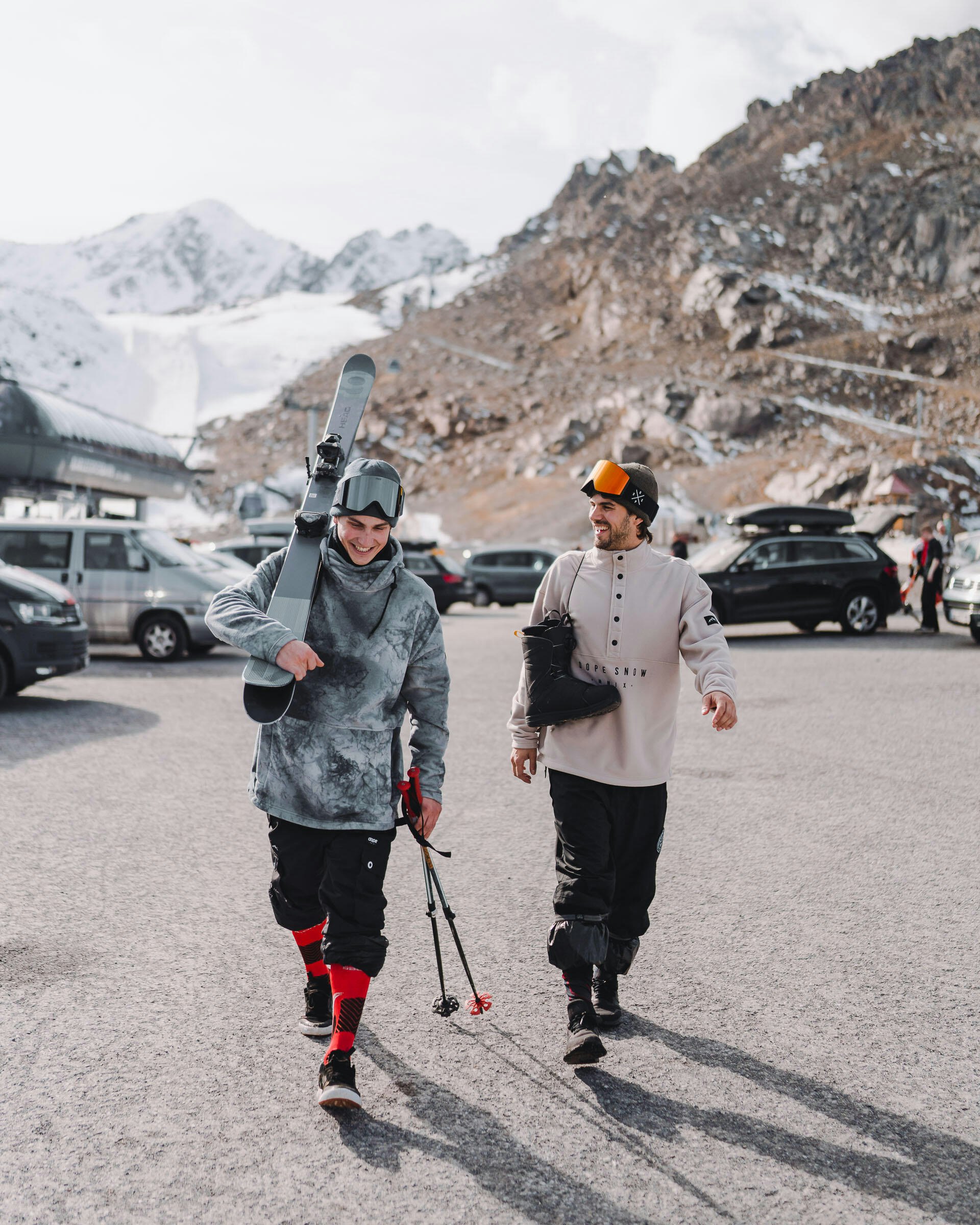
Leaving a bit of room for the unknown is also a vital ingredient for the perfect ski trip. And by that, we mean don’t have everything planned to an absolute tee before you arrive.
Part of a perfect ski trip is allowing room for some flexibility – you never know who you’re going to meet or what you’ll discover when you get there. You might chat to a liftie in the bar who knows the best secret stash, and boom, that’s tomorrow’s plans sorted – and your original itinerary out the window.
You might also be exhausted after a couple of days riding and need some unplanned-for downtime. That’s often why most lift tickets are “3 of 5 days” or “4 of 6 days” – even they allow some wiggle room for the days you want to be on and off the mountain.
If you get there and realize you crave a shredder’s day off, explore the resort and switch things up. This could be through non-ski activities like ice skating, dog-sledding, fat biking, or tubing – or booking a massage at the local spa or via your hotel. Of course, there’s also the fun of going where après-ski takes you or booking a restaurant you like the look of for the following night. So, leave a gap in your plans for spontaneity and some ‘let’s go where the vibes take us’ fun.
Wrapping up
So, now you have everything you need to prepare for the sickest ski trip ever and take the stress away from the shred! And once you’ve ticked everything off the list, all you have to do is turn up, sit back, relax (well, unless you’re driving), and think about the snow and good times ahead.
And if something goes wrong? Well, that’s why not everything’s planned within an inch of its life.
A little bit of the unknown always leads to the possibility of adventure. And what makes a trip more perfect (and memorable) than that?
Reckon we’ve missed a vital step? Let us know by reaching out! We’d be stoked to hear from you – and have the chance to make someone’s ski trip even more epic.
Related Reading:
